Prato and Its Territory
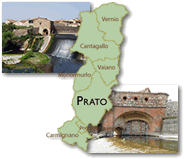
The intensely urbanised aspect of Prato’s plain conceals unexpected naturalistic treasures, which were systematically exploited as of the Middle Ages. Model farmsteads populated a particularly fertile, fruitful countryside, experimenting innovative farming techniques and introducing, for the first time in Italy, exotic plants like rice. Alongside these production centres were born grandiose villas, exemplified on the models of Vitruvius, widespread in Renaissance literature.
In the locality of Tavola, a short distance from downtown Prato, stands a farm born by order of Lorenzo the Magnificent in the late 15th century. The complex is a unique example of a Renaissance model farmstead.
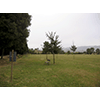
The farm known as "Cascina di Tavola" was born after Lorenzo the Magnificent’s purchase, in 1470, of the area on which the Villa Ambra at Poggio a Caiano was successively built. The villa of Cascina di Tavola, surrounded by an enclosed hunting reserve known as the Barco Reale or Barco Mediceo, and the homesteads and farms lying in the Tavola area, along the banks of the Ombrone River in Prato, formed the oldest nucleus from which the complex intervention of draining and containing the waters developed.
In 1477, Lorenzo the Magnificent gave the farm that had been built for the needs of the villa, the form of a Renaissance model farm where quality products (such as honey and silk) were produced, and prime livestock was raised, in addition to exotic hunting animals (such as peacocks, Spanish rabbits and white deer). The farm’s main structure, still visible despite the restructuring that continued up to the time of the Kingdom of Italy, still preserves the look of a late medieval fortalice with fosses and corner towers concentrated around a central courtyard. Derived from Vetruvius’ treatise, De Architectura, the structure was built by Giuliano da Sangallo or, according to others, by Giuliano da Maiano.
Under the grand duchy of Francesco I de’ Medici, the farm increased its functions in the study of new cultivation systems to the point of becoming one of the first rice plantations in Italy at that time. This cultivation, however, was outlawed by Peter Leopold of Lorraine to contrast the development of malaria in the surrounding area.
The farm has been private property since the 1920s, but the park that surrounds it is still open to the public and can be regularly visited.
(Gabriele Pratesi)
Leaving Prato, heading south on the SS66, we come to the village of Poggio a Caiano, dominated by the imposing mass of the Medici Villa Ambra. The facade of this construction built by Sangallo clearly shows the recovery of classical architectural models.
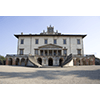
Purchased by Lorenzo the Magnificent in 1479, the Villa of Poggio a Caiano was reconstructed by Giuliano da Sangallo along Alberti’s precepts. For the entire 16th century, the complex constituted one of the most important examples of a princely out-of-town residence where the relationships between construction and surrounding landscape formed a new union. The building is formed by a quadrangular block rested on a base with arches, and with a facade characterised by a portico with a tympanum inspired by ancient models. Inside, the main hall presents a rich decoration, desired by Giovanni de’ Medici (future Leo X), with a series of frescoes begun by Andrea del Sarto, and continued first by Pontormo and then by Alessandro Allori. The paintings and frescoes by Allori often depict glass objects similar to the scientific glassware of the Accademia del Cimento.
The Poggio a Caiano complex was not only a holiday home, but an important landed investment as well, as it was sited in a very productive area. The organisational centre of the farming interest was a farm built on a project by Sangallo in the vicinity of the villa. The original layout of the estate is faithfully portrayed in the lunette by Utens at Pratolino. The villa is situated in the middle of a vast estate with well cultivated fields, fruit-tree plantations, woods, and a secret Italian garden. The complex also included a hunting reserve where in addition to deer and hares, one could also encounter exotic animals given to Lorenzo the Magnificent by the Sultan of Babylon. Around 1570, by order of Grand Duke Francesco I de’ Medici, various modifications were made including the reconstruction of the fortified enclosure on a project by Bernardo Buontalenti. In 1580, the villa was visited by French philosopher Montaigne. Often cited as the "Poggio", it appears several times in the correspondence of Galileo Galilei as the Grand Duke’s residence.
Under French rule, the park was restructured along the naturalistic model which changed its orthogonal structure in favour of winding walkways. The flowerbeds of the secret garden were replaced with vast lawns with curvilinear border and a basin with spouting fountain in the middle. A lemon-house was built between the garden and the park on a project by Pasquale Poccianti who also replaced the rectilinear stairs by Sangallo with a semicircular staircase. In 1919, the villa was donated to the State of Italy.
(Graziano Magrini)
From the Medici Villa, travelling the streets from Viale 16 Aprile to Viale Fratelli Cervi, we reach Via di Galceti where the Centro di Scienze Naturali is headquartered. In an idyllic context, the institution conjugates the activity of assistance to animals needing care with that of a museum known for its collections of vertebrates and invertebrates from the Prato territory.
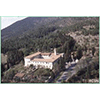
The Centre was created in 1967 through an agreement between the Commune of Prato and the local Tourist Board for the realisation of a facility dedicated to the environmental and ecological aspects of the regional territory. The environmental park, consisting of a forest of maritime pines, is located in the protected area of Monteferrato. One of the main activities of the centre is that of caring for sick or injured animals and helping them to adapt again to life in the woods. There are two ponds, used by aquatic animals for sojourn and nesting. There is an archaeological site with a Palaeolithic Mousterian Industry Station. The centre also has a library with a newspaper and periodicals sections specialised in the environmental sector, a temperature and rainfall monitoring station and a forest fire-fighting section.
Noteworthy among the scientific collections in the Museum of Natural Sciences is a palaeontological collection containing fossils of invertebrates and vertebrates found in the Prato territory; a rock collection, of systematic type, with minerals and rocks of regional, but also national and foreign provenance; a herbarium containing species native to the area, with special reference to the serpentinous flora of the Prato Monteferrato Reserve; a zoological collection of vertebrates and invertebrates, almost all of them stuffed (consisting for the most part of animals cared for by the centre which failed to survive), coming mainly from the surrounding areas, although some national and foreign specimens are also present.
The Centre's scientific activity consists primarily of analysing and studying the territory. However, it carries out educational and cultural activities through various initiatives, many of which can boast efficient facilities such as workshops of environmental education and eco-tourism, with visits to the Centre and to the territory. It also has a planetarium, built thanks to the collaboration of the Quasar Amateur Astronomers Group, consisting of a fixed dome with diameter of four meters and an instrument designed to project the night sky, simulating the motion of the Earth, the Moon, the planets and the stars.
(Donato Monaco)
Going back towards Viale Fratelli Cervi, following the street eastwards, and travelling the cycling track between Prato and Vaiano, we come to the locality of Santa Lucia where we see the impressive hydraulic structures of the Salto del Cavalciotto leap. This complex was once part of a well-developed system of canalizations of the Bisenzio, which did not fail to arouse the interest even of Galileo Galilei.
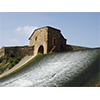
The city of Prato had a complex water canalisation system which, thanks to weirs and mill-races, crossed the city in various directions. The water of the Bisenzio was channelled upstream of Prato, in the area known as the "Cavalciotto" jump which Galileo Galilei too, commented (the hydraulic structures of "Cavalciotto" are visible from the picturesque cycle track that from Prato climbs up towards Vaiano). In the vicinity of Porta al Serraglio, the water divided into four mill-races, one of which, bound for the countryside, was utilised for agriculture and for several mills and factories, while the other three entered the city, providing motive power to various plants located there.
The menacing spates of the Bisenzio were also the object of great attention. In 1630, Grand Duke Ferdinando II de’ Medici sent Galileo, as his primary mathematician, to take part in inspections at the Bisenzio River, in the company of grand-ducal architect Giulio Parigi and engineers Alessandro Bartolotti and Stefano Fantoni. The visit was then postponed to give Galileo and Parigi the possibility to examine the proposals worked out by the engineers. Bartolotti considered eliminating the bends of the river, reducing it to a canal, while Fantoni thought the river should maintain its natural course, intervening only at the most dangerous points, particularly reinforcing the banks. The latter hypothesis was also supported by Galileo in a long letter to Raffaello Staccoli in 1631. Recognising the main cause of the floods of the Bisenzio, Fantoni and Galileo proposed to clear the river bed, removing the deposits that caused the water level to rise. As for the solutions proposed by Bartolotti, the Pisan scientist was instead critical, availing himself of mathematical reasoning. Successively, Galileo denounced the presence of the same problem for other rivers of Osmannoro, for which he recommended taking analogous measures. Studies on the Bisenzio were the motive for an exchange of letters between Galileo, Benedetto Castelli, Andrea and Niccolò Arrighetti on the problem of the speed of water currents. Galileo sent Castelli a copy of the letter he had written to Staccoli. In 1631, Cesare Marili too, wrote to Galileo about the Bisenzio, underlining the analogies between this river and the Reno.
(Graziano Magrini)
****************************
Texts by Elena Fani
English translation by Victor Beard
Last update 21/gen/2008



 = libraries and archives
= libraries and archives  = scientific research centers
= scientific research centers  = memorial places of scientists
= memorial places of scientists = public health places
= public health places = places of science and worship
= places of science and worship = places of technology
= places of technology  = museums and collections
= museums and collections  = villas and gardens of science
= villas and gardens of science


